

F7U-3

The Chance Vought Cutlass was probably the most radical fighter aircraft to ever achieve fleet service. It was the first tail-less airplane to go into production in the United States, the first jet fighter in the U.S. designed from the outset with afterburners, It was the Navy's first swept jet and the first with a steerable nose wheel and irreversible power control system. It was also the first U.S. aircraft to have supersonic separation of stores and carry rockets in an under fuselage pack. The design started in June of 1945 and the tail-less configuration was an attempt to solve compressibility problems. The Navy opened a fighter competition in 1945 specifying an aircraft capable of 40,000 feet altitude and a speed of 600 m.p.h. Six companies entered designs, Vought, McDonnell, North American, Curtiss Wright, Martin and Douglas. Vought was chosen the winner on June 25, 1946.
The initial contract was for 3 XF7U-1's. The first of these flew on September 29, 1948. Even though it was not equipped with an afterburner, test flights were promising enough for the Navy to order 14 production F7U-1's. All three of the prototypes were destroyed, one during a test flight, one disappeared on a flight to obtain some aerial photos and the third during an air show.
The Kit
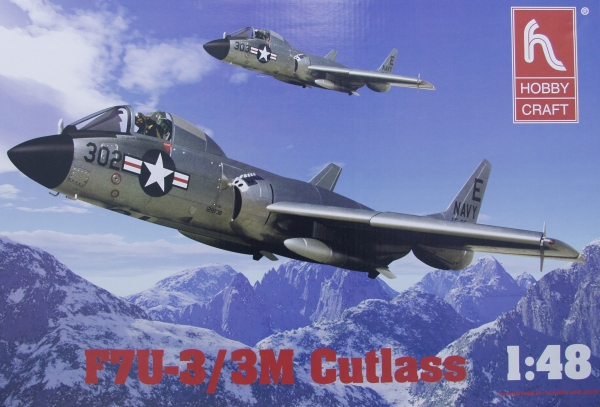
The Hobbycraft Cutlass comes in an overly large but sturdy top open two part box with catchy art work on the top. Inside the box we find one bag with all the parts except the clear parts in it. Not my favorite packaging method but there was no serious abrasion damage. Altogether there are six sprues molded in a light gray plastic. Surface detail is recessed and the surface is smooth but has a sort of blotchy appearance. This may be from the mold release agent and may look better when cleaned but shouldn't effect the finish. The panel lines are very finely done but the fastener detail seems a bit over done. The rudders are fixed and the demarcations for them need to be deeper than they are as they are the same size as the panel lines. The Elevons are separate but the speed brakes are fixed. Looking over the major air frame pieces I found no major surface defects and some of the parts had moderate amounts of flash. Some of the smaller parts have a moderate amount of parting lines to deal with. The insides of gear doors, the struts, the back sides of the wheels and some of the underling stores had ejector pin marks, some of which you'll want to clean up. The section of the fuselage forward of the intakes is separate which almost always leads to fit problems. The cockpit is pretty light on detail. The leading edge slats are separate but the instructions are vague as to whether they can be assembled in the closed position. The nose wheel bay and the main gear bays are boxed in and have some detail but it has been reported that the nose wheel bay is too shallow, not that it will bother me any. The kit comes with wing tanks and missiles. There are no engines, just front and backs. The sprue gates on some of the parts are quite heavy so care is in order when removing these parts. All together there are 79 gray parts. See below for photos.
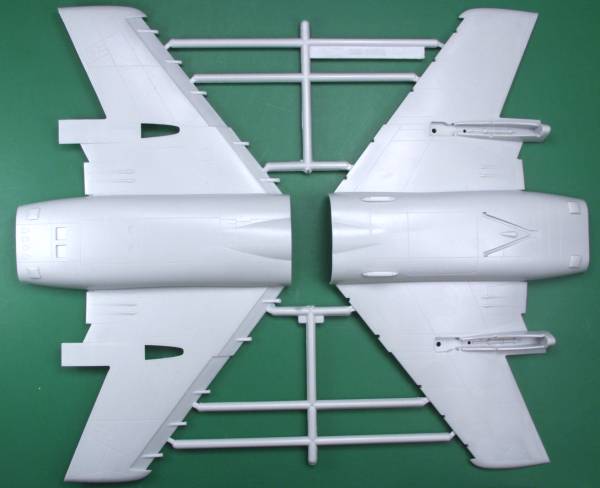
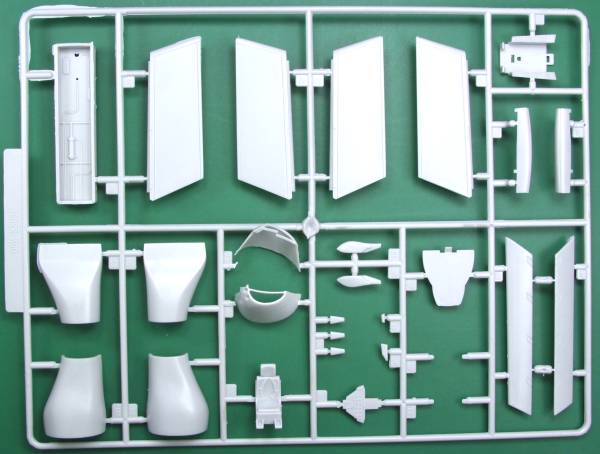
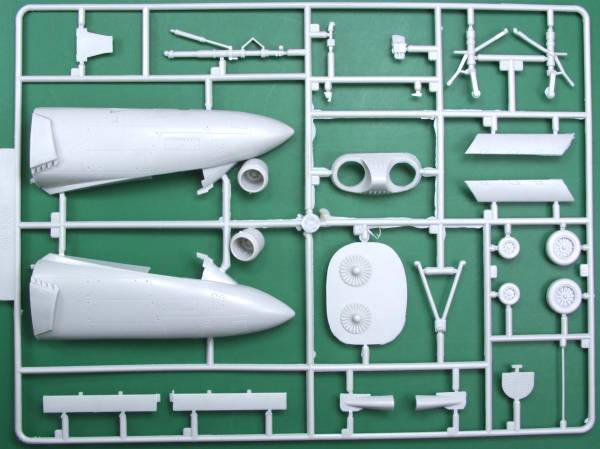
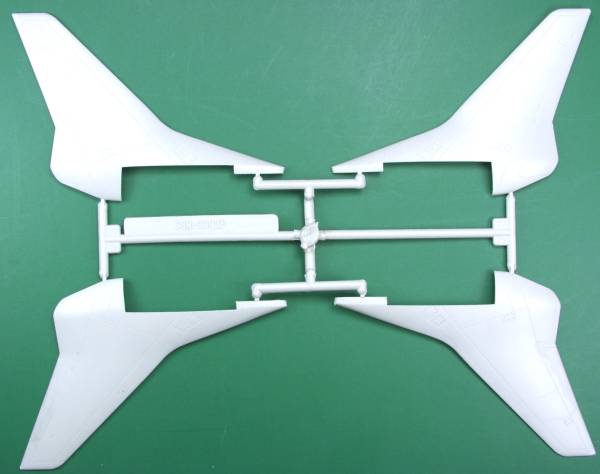
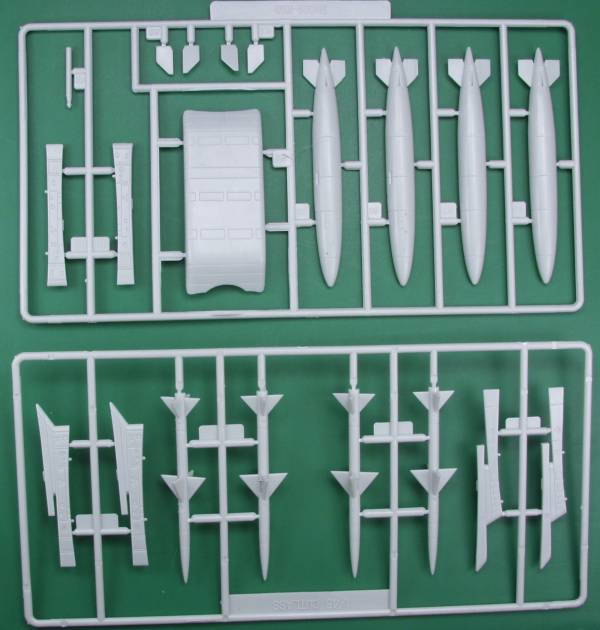
The clear parts are are not very clear having a foggy appearance and are thicker than what most better kits provide these days. According to other reviews the canopy shape is not right as well. Frame parts are raised. There are 2 clear parts for a total of 81 parts in the kit.
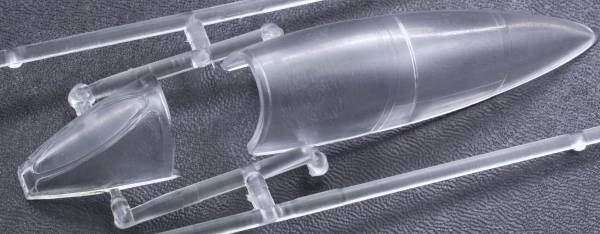
The decal sheet is rather large and contains markings for seven aircraft, two in gray over white and five in natural metal. The decals are thin and well registered and include some stenciling. I have heard some bad things about these so caution is advised.
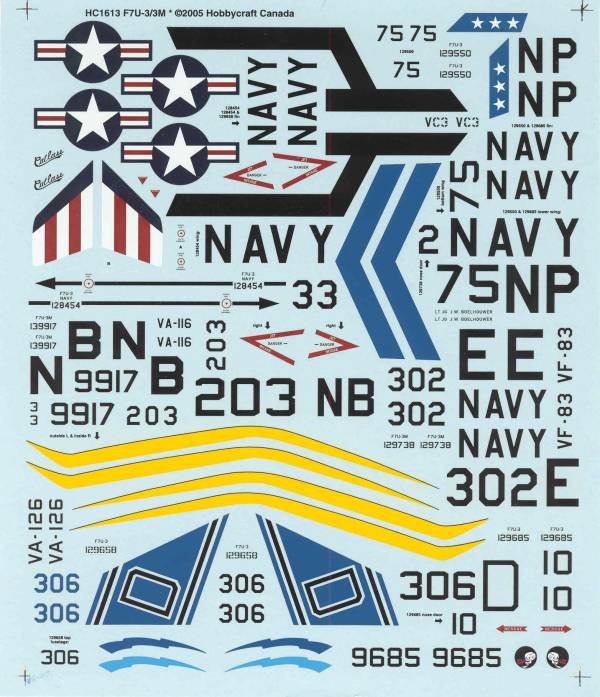
The instructions are printed on a 11 1/2" x 25" sheet which was folded in half but looked like it was intended to be folded in thirds as that is the way the panels are numbered. The first panel is mostly wasted with a copy of the box art, a list of kit features in five languages and two colors listed by FS numbers and equivalent Floquil / Polly Scale, Humbrol and Modelmaster colors and a chart showing what the different assembly icons mean. The next four panels are pictorial diagrams with part numbers and little or no text and the last panel is blank and titled "Notes" all of the painting and decal information is located on the bottom of the box which lists ten colors by FS numbers.
After Market Goodies
Squadron offers a replacement canopy which is much clearer than the kit parts but appears to be the same shape as the kit parts so it does not solve the shape problem. Also the frame lines are very light which will make masking more difficult. See below.
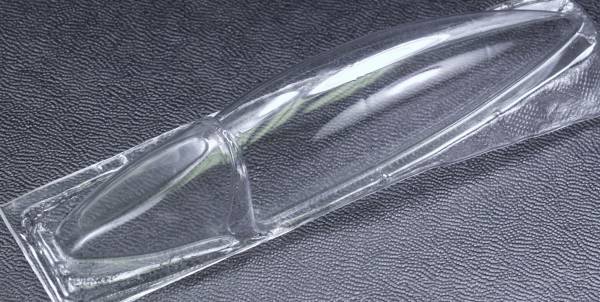
Before I was aware of the Collect-Aire correction set for this model, I decided to improve the cockpit with an upgrade set from Lone Star Models [LSM0284]. Molded in a tan resin, it consists of a new cockpit tub, ejection seat, control panel with raised instrument detail and a rear deck with the canopy mechanism. It also includes a piece of fine solder. The parts are well detailed but there were a number of pin holes and the oxygen hose on the seat had a short shot. The seat had a fair amount of flash. The set came with no instructions so you are pretty much on your own how to fit it together. See photo below.
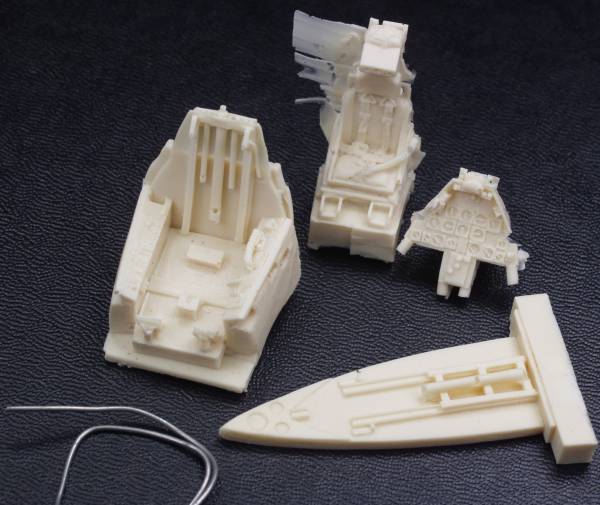
The Collect-Aire Conversion Set
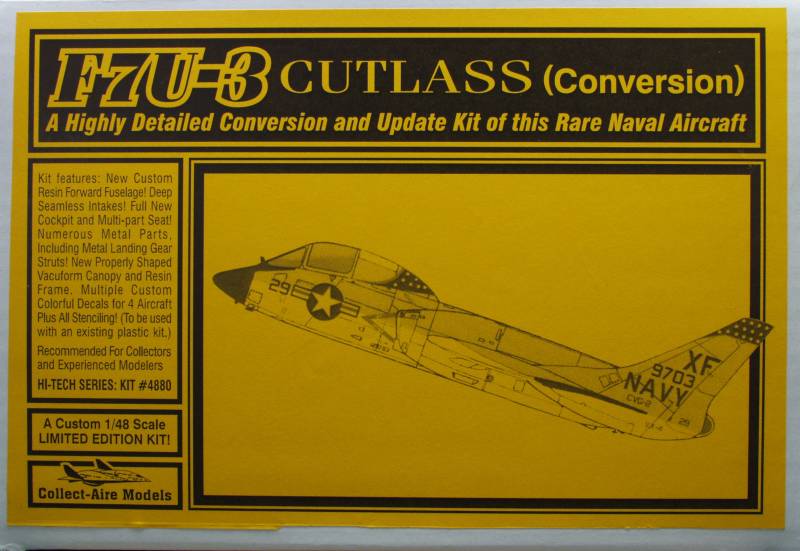
The Collect-Aire conversion set, if you can get past the sticker shock, is the way to go with this kit. At $80 it pushes the price of the kit to over $100 so you need to want to do this really bad ! It replaces everything forward of the intakes which is where the Hobbycraft kit is mostly wrong. The set comes in a sturdy corrugated box stuffed with tissue paper and containing the instructions, two decal sheets and three bags, one containing the resin parts, one the cast metal parts and the third the vacuformed canopy. The resin parts are cast in a tan color and consist of two forward fuselage halves. These are hollow cast, quite thin for resin and feature fine recessed panel lines. There is no casting block and only a light amount of flash. There were no pin holes and only a couple very small surface irregularities. The rest of the resin parts include two very nice seamless intakes, engine fronts, cockpit tub, instrument panel, intake splitters, pilots seat and mounting rails, forward and rear cockpit coamings and a few other detail bits. Most parts have no casting blocks to remove and only a light amount of flash. One of the splitters and the rear cockpit coaming has a few pin holes to fill and the cockpit tub side panel detail was a little soft but otherwise the parts were all nicely molded molded with no short shots. Altogether there are 18 resin parts, see photo below.
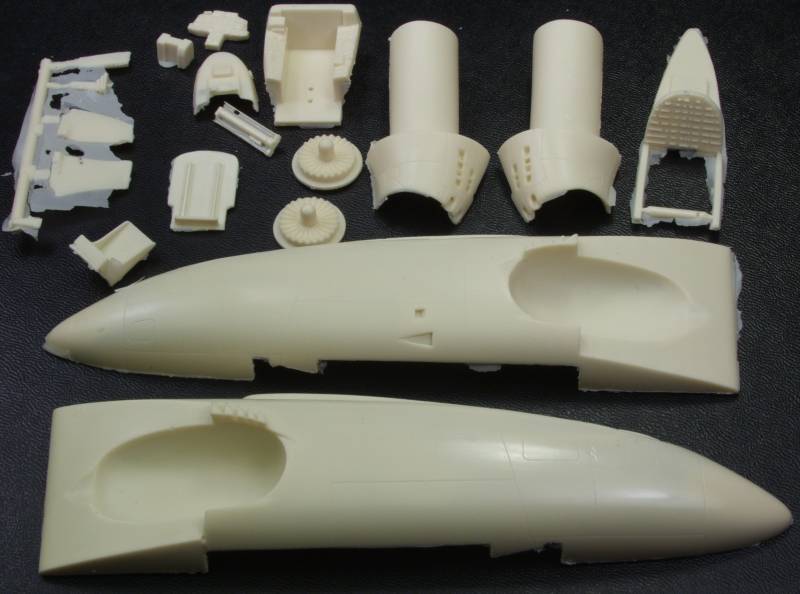
The cast metal parts consist of the main and nose gear struts and various actuating parts, the two side frames for the pilots seat, rudder pedals, canopy strut and some other odds and end pieces. These are for the most part nicely done with little clean up required. The end of the nose gear strut is a separate piece so the nose wheel can be posed at an angle rather than straight ahead. A nice touch ! Altogether there are 20 cast metal parts, see photo below.
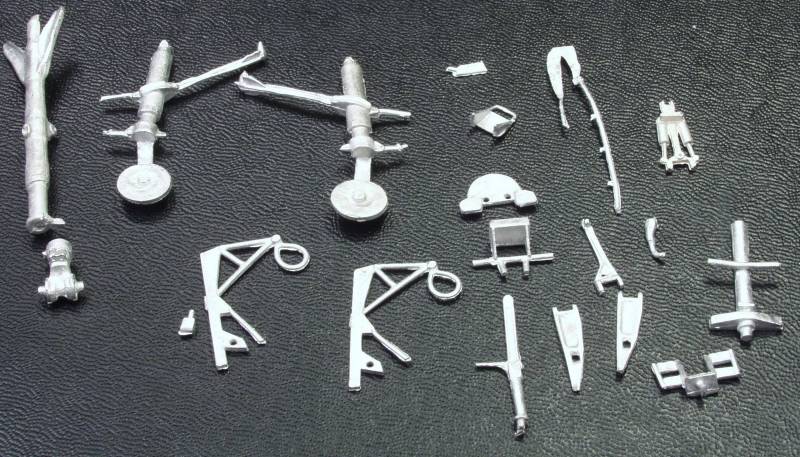
The set includes a vacuformed canopy in the correct shape. It is very thin and probably the most disappointing part of the set. The frame demarcations are very light and though very clear have a slightly rough finish, almost as if the die was dirty when they were made. I may decide to use some thin tape to represent the frame. I'm sure a dipping in Future will improve them some but would have hoped for better. There are two supplied so there is some room for failure, see photo below.
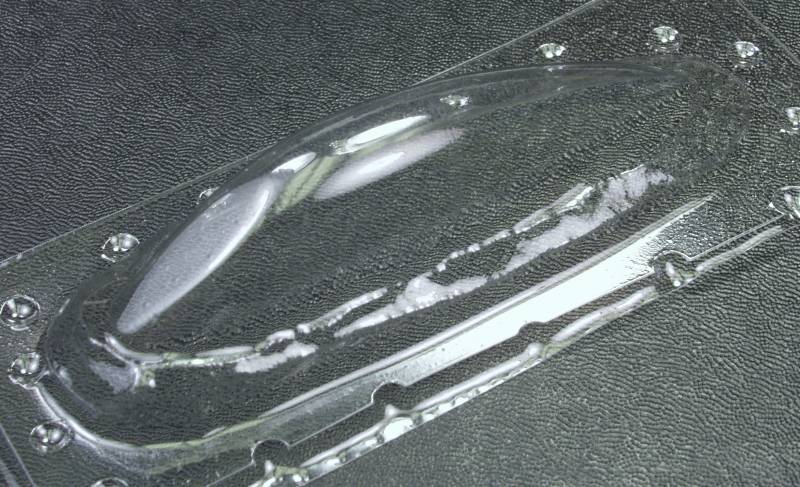
Decals are provide for four aircraft on two sheets and include a fair amount of stenciling. They are in perfect register, are thin with minimal clear material and have a semi gloss finish. All in all they look really nice, won't know how they go down till I actually try them. See photos below.
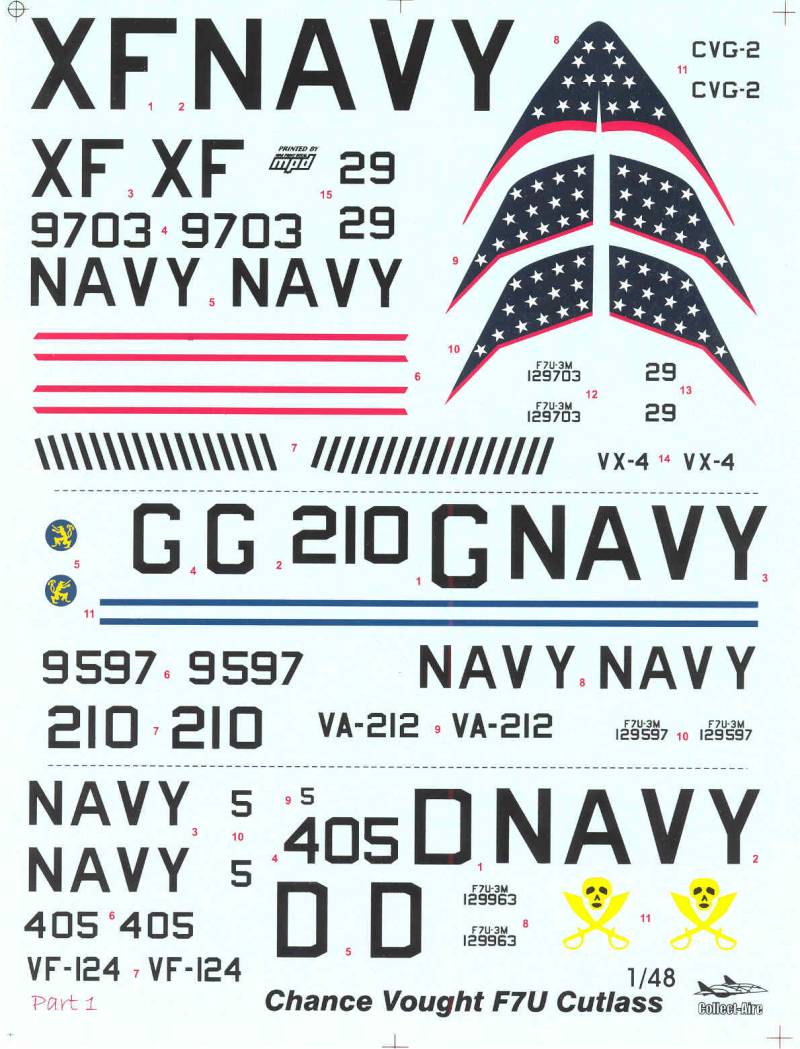
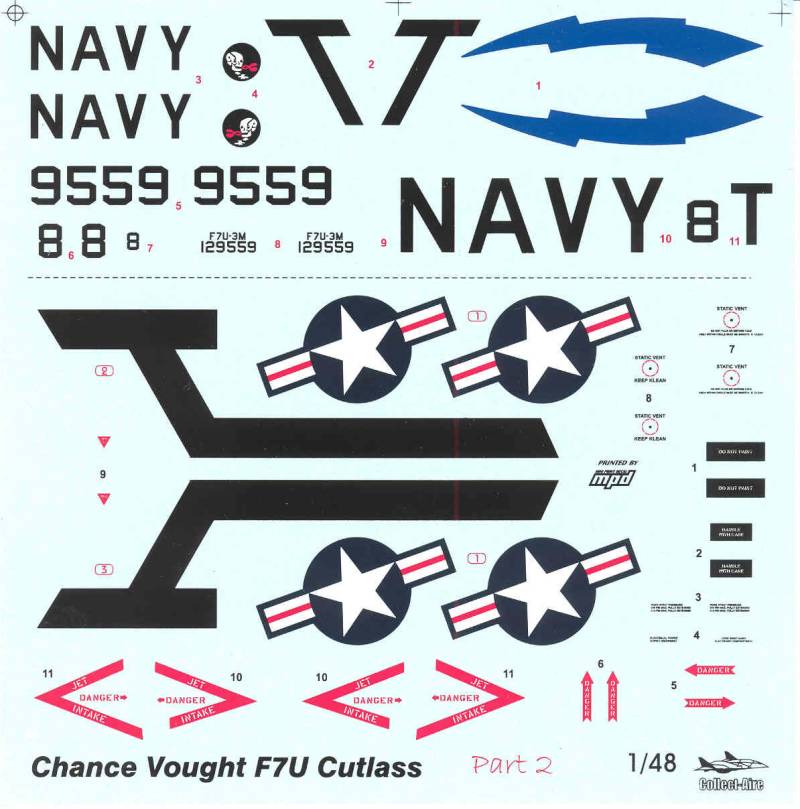
The instructions consist of five 8 1/2" x 11" pages
stapled together and printed on both sides.creating 10 pages altogether.
The first page is a cover sheet, the second page is a drawing showing
the location of the main forward fuselage parts, the third page has
drawings showing the assembly of the cockpit tub and seat and the
seamless intakes and starts a history that runs through to the end of
the fifth page. The sixth page is titled modelers notes and recommends
buying the Steve Ginter book listed below. It also has a brief
explanation of the profiles show for the four aircraft covered by the
decals. Pages seven eight and nine have color profiles showing paint
schemes and marking locations for the aircraft provided in the decals.
Page ten is blank. The instructions are generally good but do leave you
on your own in some areas and could be better in my opinion but I guess
that is why they describe the kit as being for collectors and experienced
modelers !
Like many Hobbycraft kits there are some things that aren't quite right as well as some fit issues and a bare bones cockpit. The cockpit can be improved with the Lone Star set. The addition of the Collect-Aire set should allow you to build a nicely detailed and correctly shaped model of this early and fascinating jet. I was drawn to the Cutlass's tail-less design which seemed to carry on some of the German tail-less designs from WWII. The basic kit I would recommended to modelers with intermediate skill levels, if you want to use the Collect-Aire set, I would recommend it for those with advanced skill levels
Links to kit build or reviews
Links to review/builds can be found here and here.
References
Best source of information on this bird is "Chance Vought F7U" by Steve Ginter
Updated 4/6/09